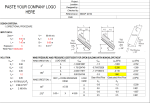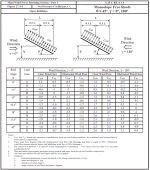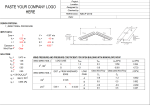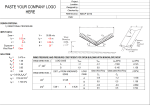wind load on open buildings
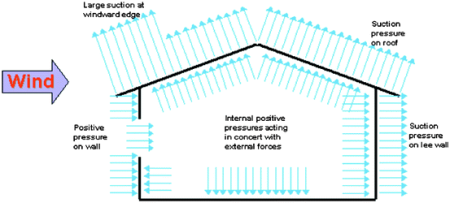
Description
Wind load on monoslope free roofs, pitch free roofs, troughed free roofs open buildings like covered court, sheds or car parks.
The National Structural Code of the Philippines (NSCP) is a comprehensive code that provides guidelines for the design, construction, and maintenance of buildings and structures in the Philippines. NSCP 2010 (Volume 1) includes provisions for determining wind loads on structures, including open buildings. Here is a general outline of the design process for wind loads on open buildings, based on NSCP 2010:
-
Determine the basic wind speed: Establish the basic wind speed for the location where the open building is being constructed, using the wind speed map provided in the NSCP 2010 or obtaining the data from local authorities.
-
Calculate the design wind speed: Adjust the basic wind speed for factors such as topography, altitude, and location within the Philippines. The design wind speed will be used for calculating wind pressures on the open building.
-
Define the building geometry: Determine the dimensions of the open building, including height, width, and length. Identify the openings, such as doors and windows, and their locations within the building.
-
Determine exposure category: Classify the building's exposure based on its surroundings, such as open terrain, urban areas, or coastal regions. The exposure category affects the wind pressure coefficients and gust factors used in the wind load calculations.
-
Calculate wind pressure coefficients: Determine the wind pressure coefficients for the building's external surfaces and openings, based on its geometry and exposure category. These coefficients are used to calculate the wind pressures acting on the building.
-
Calculate the wind pressures: Multiply the design wind speed by the appropriate wind pressure coefficients to determine the wind pressures acting on the building's external surfaces and openings. Consider the effects of gusts and other dynamic factors in these calculations.
-
Determine the wind loads: Calculate the wind loads on the building's structural elements, such as columns, beams, and roof members, by integrating the wind pressures over their respective areas. Account for the effects of the building's geometry and openings in these calculations.
-
Design the structural elements: Design the structural elements to resist the wind loads, ensuring that they meet the strength, serviceability, and stability requirements specified in the NSCP 2010 and other applicable codes and standards.
-
Design connections and bracing: Design the connections between the structural elements and the supporting structure, such as foundations or other buildings, ensuring that they can transfer the wind loads safely. Design the bracing and other lateral load-resisting systems for the open building to provide stability and resistance to wind-induced forces.
-
Evaluate and optimize the design: Review the design to ensure that it meets the wind load requirements, design criteria, and any applicable codes and standards. Optimize the design by adjusting the structural elements, bracing, or connections, if necessary, to achieve the most efficient and economical solution.
By following this general design process, you can determine the wind loads on open buildings and design the structural elements, connections, and bracing to resist these loads, as per the requirements of NSCP 2010 and other applicable codes and standards. Always consult with local authorities and engineering professionals to ensure compliance with the specific requirements for your project and location.
Calculation Preview
Full download access to any calculation is available to users with a paid or awarded subscription (XLC Pro).
Subscriptions are free to contributors to the site, alternatively they can be purchased.
Click here for information on subscriptions.

